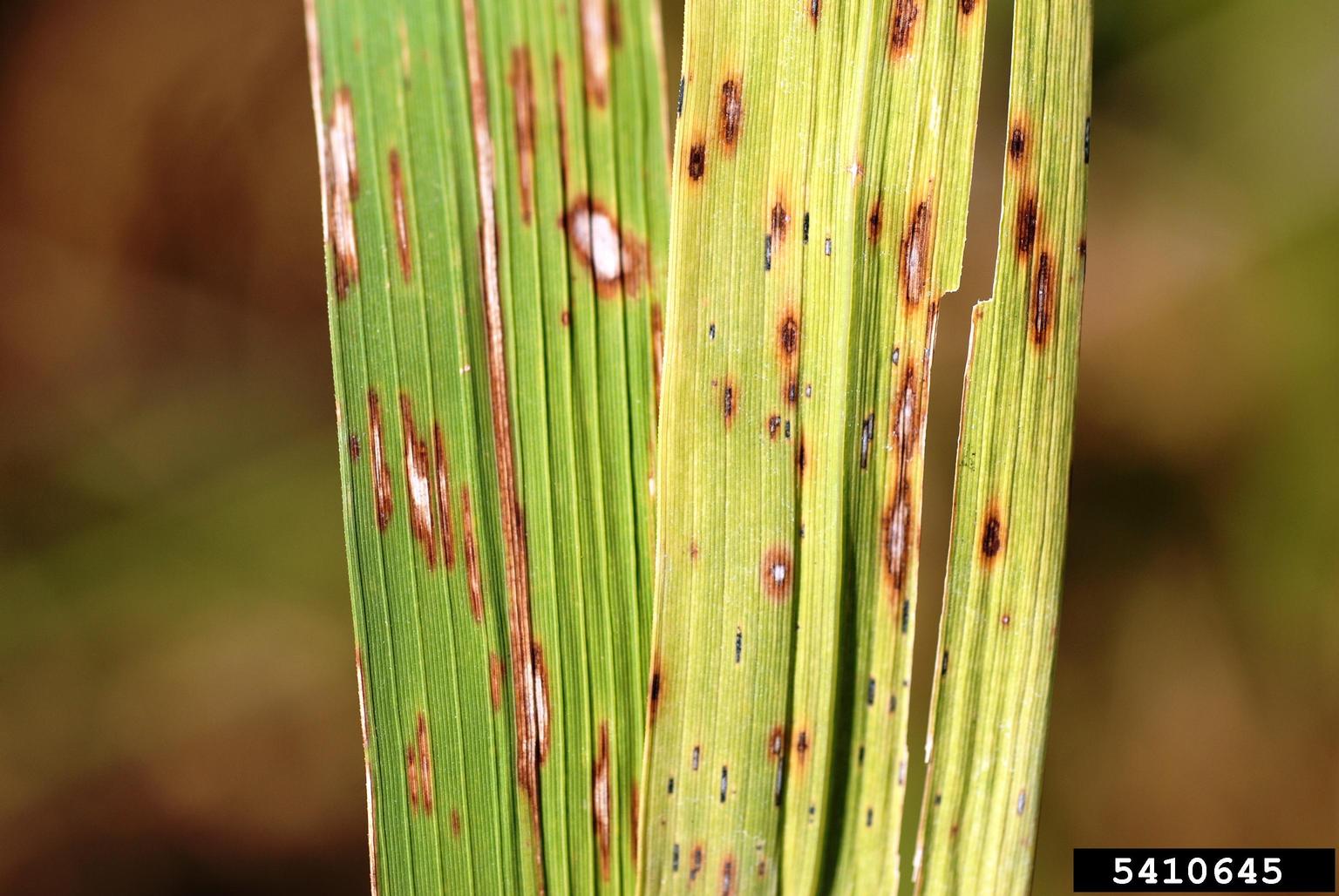Narrow brown spot /narrow brown leaf spot/ cercospora leaf spot
Causative agent: Sphaerulina oryzina (syn. Cercospora janseana, Cercospora oryzae).
Symptom:
- Panicle initiation.
- Light to dark brown, linear, and progress parallel to the vein.
- On glumes, lesions are usually shorter but can be wider than those on the leaves. Brown lesions are also found on pedicels.
- The disease also causes discoloration on the leaf sheath, referred to as “net blotch” because of the netlike pattern of brown and light brown to yellow areas
- Narrow brown spot can be confused with white leaf streak. White leaf streak are oblong, white to creamish white, delimited by narrow brown margins, amphigenous, and interveinal.

Pathogen/ Etiology
- Conidiophores are produced in groups and brown in colour.
- Conidia are hyaline or sub hyaline, cylindrical and 3-5 septate.
Favorable condition:
- Usually occurs in potassium deficient soils.
- Temperature ranging from 25−28°C.
- H =75-80%.
Survive and spread:
Primary source of inoculum is by means of infected plant debris. Secondary spread of the disease is by means of air borne conidia produced on leaves.
Management
- Remove weeds and weedy rice in the field and nearby areas to remove alternate hosts that allow the fungus to survive and infect new rice crops.
- Use balanced nutrients; make sure that adequate potassium is used.
- Spray propiconazole at booting to heading stages.
- Spray Mancozeb@0.2% or Carbendazim@0.1% twice at 15 days interval starting with disease appearance